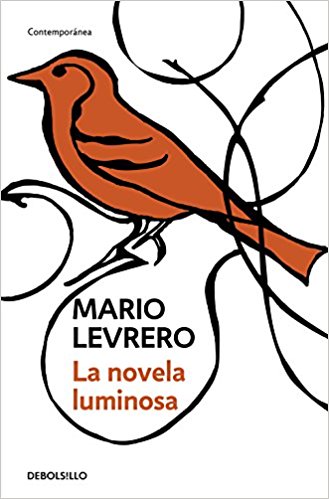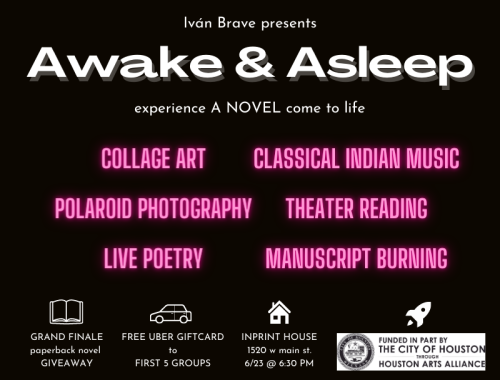Click here for PDF — Mario Levrero’s The Luminous Novel (Preface)
Above you will find my translation for Levrero’s preface to his 564-page book, The Luminous Novel. Below you can read the letter I attach to all my proposals to agents and publishing houses that specialize in translated work. The letter details Levrero’s influence on Latin American Letters, and calls for his posthumously published La novela luminosa to be translated into English for the global reader.
There is no doubt in my mind that Levrero’s induction into the global conversation about Latin American literature would provide much needed context to that quarter of the globe, considering America’s current foreign policy.
This next bit I don’t include in my formal proposals for risk that I come off as “bonkers,” to quote my professor John Reed. But I know giving this book to English-speaking readers would broaden their view of Latin American literature, because this book has changed my life. It has given my writing meaning and context. I read La novela luminosa, and I stop doubting myself, stop doubting my writing. I read, then simply write. Simply put thoughts on paper and trust this with my very core: I follow a tradition that stretches far back to Cortázar, Kerouac, Borges, Dostoevsky, Quevedo and even Cervantes (praise be unto him), then up back to Levrero himself.
I hope you enjoy these pages. They were part of the final project for my Translation Seminar led by the estimable, venerable, strictly badass professor, Val Vinokur. I have translated 15,000+ words, yet barely scratched the surface. My hope is to continue translating this book, as a benefit to myself, but more so as a benefit to its next reader.
Letter to Agents and Publishing houses:
The Luminous Novel
Written by Mario Levrero
Translated by Iván Brave
Mario Levrero is an author one ought to be reading and here is the proof: in his 64 years of life, from publishing La ciudad (The City) in 1970 to hosting a series of literary workshops before his passing in 2004, Levrero rose from the shadows of literary obscurity into a hidden gem within the larger Uruguayan literary community. One worth sharing with other American countries, including the English speaking ones. Levrero’s works, ranging from the surreal to the fantastical to the detective novel, span these and many other topics, always with the painstaking attention to detail and obsession with language that Levrero became known for. Because Levrero never enjoyed the spotlight—rather, he preferred his late starts to the day, and quiet time to read three to four police novels a week—Levrero was free to pave his own literary path. Truly, Levrero, stood apart among his contemporaries as having carved out his own niche, his own diamond in Uruguayan literature. A singularity in his own right, Levrero can however fall under a broader and less-defined genre keen to his small South American country: Los Raros (“the weird ones”). As Gastón Garcia, a Letras Libres magazine contributor, puts it:
For reasons not totally explained, in Uruguay there has been stock of authors that critics classify, if not admirable, at least as weird. A joke about Latin America explains the most significant contributions from some of its nations: Chile has generated poets; Argentina, short story writers; Mexico, novelists; and Uruguay, the weird ones.
Levrero, then, does sits at the table with Uruguayan authors Juan Carlos Onetti, Felisberto Hernández, and Armonía Somers. If these writers don’t eat the same meal, at least they all share a sobremesa conversation between warm gourds of yerba mate. To note, in the larger literary tradition, Levrero is often compared to the English-born Mexican surrealist painter and novelist Leonara Carrington, to García Márquez for their tastes in magical realism, and Cortázar for their propensity to let the pen wander down a minute detail in prose. Esperanza López Parada of Babelia, El País writes: “Levrero is the current inversion of Kafka, a shadow groped by Camus in the key of comedy.”
From a novel about sea monsters and nymphomaniacs (Nick Carter Amuses Himself While the Reader is Murdered and I Agonize, 1975), to a novel about a writer who accepts a mission to track down the author of a brilliant manuscript sent to a publishing house with no return address (Leave Everything to Me, 1998), Levrero’s style weaves his obsessive-compulsion towards language with a surrealist’s sensibilities for unlocking the unconscious mind, all the while presenting pages and pages of prose that appear deceivingly simple. That’s the “Levreriano” genius: to sand philosophical and abstract implications into smooth and easy to read novels. So much so in any one of his novel, as in his overall body of work. Levrero himself is recorded as saying that in his over-three-decades of writing, his literary legacy inadvertently ran the same path he had intended for each novel—a path that transcends from the collective unconsciousness of his audience, to the conscious, to the out-of-body experience of one reader.
The one who put me on to Mario Levrero was a friend of mine who has in my heart always been a raro himself, to be sure, in the kindest way. We had sat next to one another in an Early Modern philosophy class at the University of Texas in Austin, and endured the harsh lessons of a lawyer-gone-philosopher-maverick who would have tossed a copy of Kant’s Critique of Pure Reason at your face if you so much as dared raise your hand to ramble off topic about Skepticism or Scholasticism in a class discussion dedicated to Modern Metaphysics (especially if you, as a know-it-all philosophy major, couldn’t define the terms drooling from your mouth and lead the classroom astray in a lame attempt to gleam some half-quote you came across during your “leisure reading”). I myself was such a philosophy major, though in this particular class I limited my hand-raising to questions. My friend on the other hand studied supply-chain management. What was he doing in a philosophy class devoted to historical context, antiquated methods of thought and philosophical correctness? I wasn’t sure. But our conversations after class seemed to revolve around three things: “THE NOW” (spoken in all-caps, always, between us), drug culture (he became, I later found out, a shroom shaman), and Latin America. My friend’s parents were Mexican, and he himself dreamed of life south of the Rio Grande. It came to no surprise when he, my friend, upon graduation took a team of young entrepreneurs off to Uruguay to found a creative start-up around Bitcoin. That’s the last I had heard of him since we both walked across the graduation stage in 2013. Three years later I found myself in Argentina, having decided to spend a year in the city of my heritage—to practice, read and write in castellano. Somewhere on a twelve-hour night bus ride on Argentina’s famous highway, Ruta 40, between the Mendoza province’s National Harvest Festival and an extended stay with family in la Patagonia, while staring out at a cool sunset dip below the Andes Mountains under the Southern Cross, I recalled a conversation with my old buddy and decided then I would trek out to Montevideo, where I had last heard from him. Plus, I had lent him a book five years before, and figured he might still have it—“The Spirit Molecule” by Rick Strassman, M.D. Lo and behold, my friend replied to my email and agreed to meet me at the Tres Cruces bus terminal in May, at the start of the fall season in South America.
Only prepared to spend three nights following his offer to host me on his couch, I had honestly held no extended dialogue with the man since our bygone conversations back in Austin. That’s why, when in my mind I had remembered the clean-cut business major who sat next to me in my Early Modern philosophy class, I was completely and utterly shocked to find before me, approaching from a silver-lined bus terminal entrance, my friend: looking like John Lennon during his Abbey Road days, big scruffy beard, baggy slacks, and thin arms that embraced me and welcomed me to Montevideo. After adjusting my dislocated jaw from its awe drop, we spent the next couple of days visiting the essential historic sites, dancing a bit of tango out on the street, and drinking lots and lots and lots (and lots) of mate. Indeed my buddy, while walking me back to the Tres Cruces bus terminal my last day, served us a couple of impeccable mates, nestling a Stanley Thermos under his armpit and pouring out below-boiling water into his mate gourd in his hand, passing it to me, and the two of us recalling in a way then that fills me with nostalgia now just how wonderful life was, how eclectic Montevideo was, how its richness was worth sharing, and of course, THE NOW.
My bus to the ferry was late, so we had an hour to spare before pronouncing our last goodbyes and eulogies. My friend took me to a book store, and there, with no sort of vacillation, he pulled a copy of “La máquina de pensar en Gladys,” by a yet unknown to me writer. He purchased it and put it in my hand. “Sorry I lost your Spirit Molecule book,” he said. “Here is a writer you need to know.” “Who is he?” I asked. “He’s kind of strange,” my friend said. “And this book won’t make much sense. But try it, see if you like it.” On the Buquebus ferry ride back into Buenos Aires I grazed the pages to the end, closed the collection of short stories, and despite having had a great rendezvous with a long lost friend of mine, a businessman-gone-bohemian-artist, I sighed a breath of disappointment. My “Spirit Molecule” book he had lost was infinitely better than the prosaic nonsense of this obscure Uruguayan author. I only finished it because it was a gift.
As fate would have it, four months later, in search of a project to translate for my Literary Translation Seminar at The New School, this obscure writer came back. I had originally planned to translate Lalo Barrubia’s Pegame que me gusta (Hit me, I like it, 2009), a realistic yet devouring tale that interweaves the disparate stories of a homeless man and a battered wife. Online, searching to see if there had been a translation worked into English, I discovered the Programme Supporting the Translation of Uruguayan Literary Works; a call for proposals from the National Department of Cultural Affairs (DNC) and the Ministry of Education and Culture (MEC), through its Creative Industries Office (DICREA). They had already accepted a translation of Barrubia’s novel in 2012, so I sent a message to my ex-patriot friend residing in the cultural capital on the orient of el Rio de La Plata asking for suggestions. “Mario Levrero,” he replied. “Or any of los raros.” A little research into this raro writer and I became enamored. Long writing trajectory, cult literary status, and a final novel sponsored by the Guggenheim Foundation Fellowship? I was in. I wanted to translate his last novel, though, opps, this was the same writer who wrote the wall-eyed stories in La máquina de pensar en Gladys? Quickly, after digging deeper into the life and legacy of Levrero I realized that what had impeded my taste for his unique approach to literary was nothing but context. True, the best way to read Levrero isn’t hastily on a ferry, suffering from a heavy mate withdrawal, after a few sleepless nights roaming Montevideo’s cobbled stoned streets with a bohemian ex-patriot and his penchant for candombe music and experimental prose. But quietly, peacefully, away from the hustle and bustle of Montevideo, Buenos Aires, or even New York City, Levrero becomes the ideal author for any burgeoning writer seeking solitude and transcendence.
In La novela luminosa (The Luminous Novel) Mario Levrero is generous; he bestows truth. He acts as though writing is a futile endeavor, never reaching its goal to illustrate the transcendent events that occur to him, yet between every line its reader hears music. Sees light. These are only metaphors insofar as the reader lacks imagination. These ring true, beyond metaphorical allusions, springing from real and brilliant storytelling, when the reader becomes as open as the book in his or her hand.
The novel itself, just over a hundred pages, was written in 1984. It was Levrero’s attempt to exorcise his own fear of death. Which he claims to have done successfully. The bulk of the book, however, the other five-hundred-plus pages (all published a year after Levrero’s actual death), are contained within the “Diary of the Scholarship” section, which acts as the novel’s prologue. In 2000, Levrero earned a Guggenheim Fellowship award to fully realize The Luminous Novel—along with a handful of necessary edits—that according to Levrero was only a chapter or two away from completion. As he vividly recalls in his “Preface: A History of The Luminous Novel,” the birth of his novel came from an obsessive image, one that he describes at the start of the novel (on page 453), but that may have also sprung from a conversation with an ex-friend of his. In that conversation, Levrero explains the impossibility of retelling a transcendent experience. “They are not accessible to literature,” he laments in the Preface. “Or at the very least not my literature.” The tragedy in these lines is that Levrero knowingly ventures to shine light on this obsessive image, his transcendent experience, despite the futile and hopeless conviction that he will never fully illuminate said experience. The irony in these lines is that Levrero somehow actually does manage to illuminate, if not that initial image, at least some image. The humor of these lines is that Levrero never realized the ending to The Luminous Novel as a Guggenheim fellow, as he had proposed, instead spending the year and the award money rearranging the electrical outlets of his apartment, buying new furniture, and pursuing an agonizing yet amorous relationship with the mysterious Chl (the details of Levrero’s squandered year are contained within the prologue, hence the title “Diary of the Scholarship”). The triumph in these lines, ultimately, is that the book taken as one whole body of work (the novel, plus the prologue, plus the preface), stands as Mario Levrero’s greatest contribution to South American Letters, if not universally to Literature. “The Preface” details, much like Cervantes in his Prologue to El quijote, the purpose and aim of the book in the hands of the reader (curiously enough, Cervantes’s tale also tells of a conversation with a friend). Levrero’s prologue, i.e. “The Diary of the Scholarship,” provides the context so crucial to understanding Levrero and his work by cataloguing day by day, painstakingly at times, nonchalantly all other times, the year in which he enjoyed the Guggenheim scholarship yet failed to complete the novel (according to Levrero). We will never know if Levrero was sincere in claiming he never completed the last necessary chapters needed to fully realize The Luminous Novel. He admits to writing a Chapter Six (titled, “First Communion”), though negates its concluded the novel in any way, instead calling it merely a “continuation.” A continuation, he says, as much as the “Diary” that he wrote sixteen years after the novel is also a continuation, noting: “But only from a thematic point of view.”
###
It is an honor to present The Luminous Novel to the English speaking world. If Mario Levrero’s cult literary status granted him the benefits of living out a hermit’s life in Montevideo, carving out a niche, a body of work interested in the abstract, the subconscious, the illuminating, and impacting a concentrated literary circle in his small South American country, the fact that his work, now, in your hands, reads in today’s lingua franca, stands to gain a greater, more impactful, influence. For not only does this translation introduce ex-patriots residing Uruguay to an artist from the country they wish to assimilate in; not only does this translation serve any deeply creative person, provided they unroll the road map hidden between the lines, the map from hopeless artist to artist who creates transcendent works (as it has unrolled for me during my studies as a Master Student of Creative Writing at The New School in New York City); but The Luminous Novel can now live between the classics of human history on the bookstands that converge at the crossroads of a single language intersection: English. Where it deserves to be. Because at the end of the day—or, for Levrero, between five to eight in the morning when he often fell asleep—what matters is the attempt. The attempt to create, the attempt to love, the attempt to go beyond ourselves. And by trying, even if you admit writing, or living, or editing, or whatever, is hopeless—at least you got it down on the page. That’s the only way words truly come to life. And that’s the only way others can see the light that had once shined so brightly in you.
Iván Brave
2016




